Accepted Scientific Name: Caralluma acutangula (Decne.) N.E.Br.
Gard. Chron. ser. 3, 12: 369. 1892
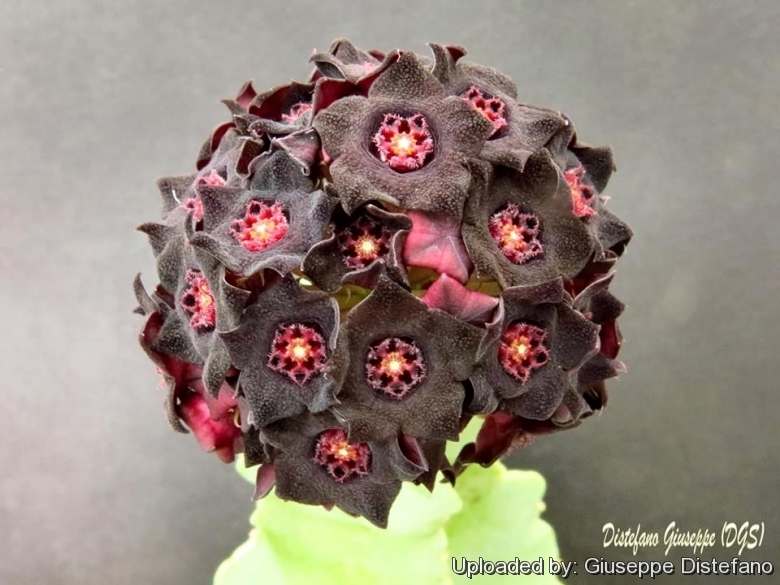
Caralluma retrospiciens var. acutangula (Caralluma acutangula) Photo by: Giuseppe Distefano
Origin and Habitat: West and East Africa, Mali, Mauritania, North-east Uganda, Kenya, Ethiopia, South Sudan and Somalia, and also in Egypt, Saudi Arabia, and North Yemen.
Altitude range 100-400 metres above sea level.
Habitat and Ecology: It occurs in lowlands and rocky hill and slopes in drier deciduous bushland . Plant distribution is patchy, the plant grows in microhabitats between rocks and beneath shrubs. Caralluma acutangulaSN|17513]]SN|17513]] shows a tendency to associate with the shade provided by other plants, regardless of the plant species. This is due to enhanced seedling establishment in shaded places, where moisture and protection from heat and high irradiance are available. Annual rainfall between 180-330 mm. Caralluma acutangulaSN|17513]]SN|17513]] is pollinated mainly by insects in orders Diptera (flies) and Lepidoptera (butterfly and moths) as well as Arachnoidae (crab spiders). Flies are the most frequent visitors.
Synonyms:
See all synonyms of Caralluma acutangula
back
Accepted name in llifle Database:Caralluma acutangula (Decne.) N.E.Br.Gard. Chron. ser. 3, 12: 369. 1892Synonymy: 17
back
Description: Caralluma acutangula is a robust, densely branched, cactus-like, succulent, 40-100 cm tall with large cluster of purple-black flowers crowded in dark globose heads on stems tips. It is one of the largest stapeliads and is closely related to Caralluma edithae and Caralluma somalica.
Stems: Erect 40-80 -150) cm tall 2-5 cm broad, smooth, pale green or whitish, (3-)4-angled, angles very acute and prominen with very concave sides. Tubercles acute, broadly triangular, bent downwards.
Leaves: Rudimental 1 x 1 mm, persistent.
Inflorescence: Terminal, many-flowered (up to 100, or more, flowers open at the same time), globose umbel-like to 12 cm in diameter. Pedicels short 5-35 mm long.
Flowers: Star-shaped, velvety purple-black. Sepals 2 mm long outside sometimes tomentose. Corolla black-purple, flat or funnel-shaped, approx. 2 cm in diameter. Corolla-lobes 8 x 8 mm broadly ovate-triangular, acute. in-side densely tuberculate. mostly papillate-pubescent, hairs long, purple, rims of the corolla-lobes mostly ciliate, hairs purple, vibratile, somewat clavate. Corona brownish-purple, 5 mm in diameter, weakly pubescent; iner coronal lobes deeply bifid, appendages falcately curved inwards, basal-medium region broadened, sometimes with a small appendage, more or less ciliate. Corona lobes blunt. not surpassing the Anthers, rarely glabrous. Pollinia inversely pearshaped. Flowers emit foetid scents, resembling rotten meat or decaying organic matter.
Blooming season: Flowers bloom after summer rain (in habitat from July to October).
Fruits: Up to 14 cm long and 1 cm in diameter.
Se eds: Brown approx. 11 x 8 mm.
Bibliography: Major references and further lectures
1) Hermann Jacobsen “Abromeitiella to Euphorbia” Blandford Press, 1960
2) Schmelzer, G.H. & Gurib-Fakim, A. “Medicinal plants 2” PROTA, 2013
3) Focke Albers, Ulrich Meve “Illustrated Handbook of Succulent Plants: Asclepiadaceae: Asclepiadaceae” Volume 4 Springer, 2002
4) G. J. H. Grubben “Vegetables” PROTA, 2004
5) Ib Friis, Kaj Vollesen “Flora of the Sudan-Uganda Border Area East of the Nile” Kgl. Danske Videnskabernes Selskab, 1998
6) Jeffrey Heath “Hassaniya Arabic (Mali)-English-French Dictionary” Otto Harrassowitz Verlag, 2004
7) Masrahi Y.S., Al-Yemeni M.N., Sayed O.H. “Nurse association of the stem succulent
8) Caralluma acutangula in its natural habitat.” Ekológia (Bratislava), Vol. 31, No. 1, p. 46– 53, 2012
9) Y.S.Masrahi and H.A.Bosly “Floral Biology and Visitors Behaviour of Caralluma Acutangula (Decne.) N.E.Br. in Jazan Region, Southwestern Saudi Arabia” Journal of Jazan University - Applied Sciences Branch Vol.1 No.1 December 2011
10) N. E. Brown. “Flora of Tropical Africa” Vol 4 Part 1, page 231 1904
11) M. Gilbert, D. Goyder , J. Lavranos, S. Liede-Schumann, M. Thulin and J. Venter “Flora Somalia” Vol 3 2006
12) LEBRUN, J. P. & A. L. STORK “Enumération des plantes à fleurs d'Afrique tropicale. Gamopétales: Ericaceae à Lamiaceae.” Conserv. & Jard. Bot. Genève. 1-712. [p.10] 1997
13) BOULOS, L. “FLORA OF EGYPT.” [vol. 2] Al Harara Publishing. Cairo. [p.229] 2000
14) FENNANE, M. & M. IBN TATTOU “Flore vasculaire du Maroc. Inventaire et chorologie.” Trav. Inst. Sci. Univ. Mohammed V, Sér. Bot. 37: [53] 2005
15) FENNANE, M., M. IBN TATTOU, A. OUYAHYA & J. EL OUALIDI (éd.) “Flore Pratique du Maroc” [vol.2] Fl. Prat. Maroc 2: [352] 2007
16) MEVE, U. & S. LIEDE “A molecular phylogeny and generic rearrangement of the stapelioid Ceropegieae (Apocynaceae-Asclepiadoideae).” Pl. Syst. Evol. 234: [171-209] 2002
 Caralluma retrospiciens var. acutangula (Caralluma acutangula) Photo by: Giuseppe Distefano
Caralluma retrospiciens var. acutangula (Caralluma acutangula) Photo by: Giuseppe Distefano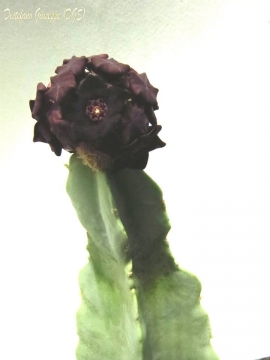 Caralluma retrospiciens var. acutangula (Caralluma acutangula) Photo by: Giuseppe Distefano
Caralluma retrospiciens var. acutangula (Caralluma acutangula) Photo by: Giuseppe Distefano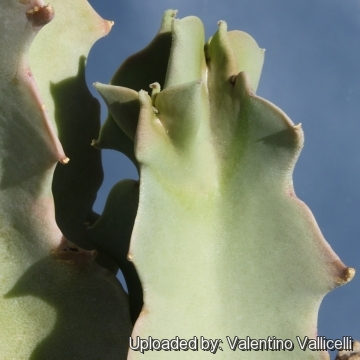 Caralluma retrospiciens var. acutangula (Caralluma acutangula) Photo by: Valentino Vallicelli
Caralluma retrospiciens var. acutangula (Caralluma acutangula) Photo by: Valentino Vallicelli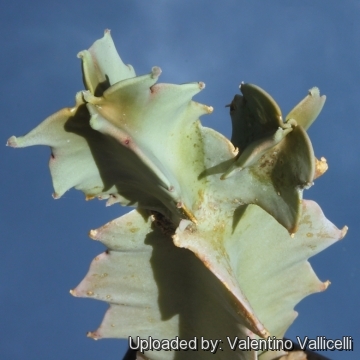 Caralluma retrospiciens var. acutangula (Caralluma acutangula) Photo by: Valentino Vallicelli
Caralluma retrospiciens var. acutangula (Caralluma acutangula) Photo by: Valentino Vallicelli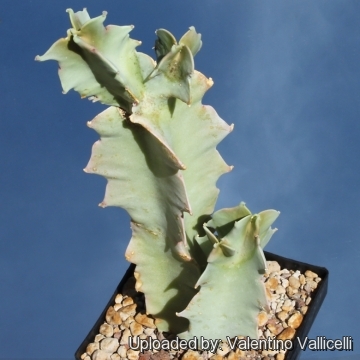 Caralluma retrospiciens var. acutangula (Caralluma acutangula) Photo by: Valentino Vallicelli
Caralluma retrospiciens var. acutangula (Caralluma acutangula) Photo by: Valentino Vallicelli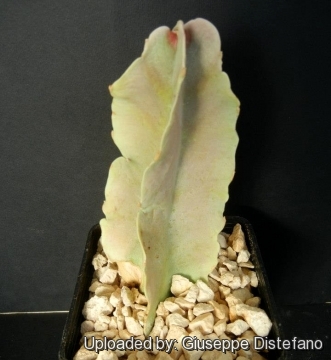 Caralluma retrospiciens var. acutangula (Caralluma acutangula) Photo by: Giuseppe Distefano
Caralluma retrospiciens var. acutangula (Caralluma acutangula) Photo by: Giuseppe Distefano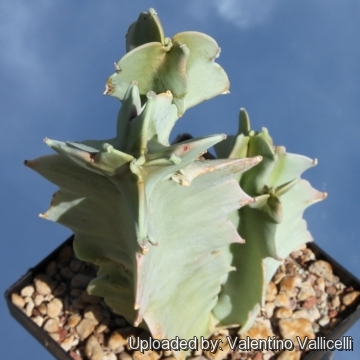 Caralluma retrospiciens var. acutangula (Caralluma acutangula) Photo by: Valentino Vallicelli
Caralluma retrospiciens var. acutangula (Caralluma acutangula) Photo by: Valentino Vallicelli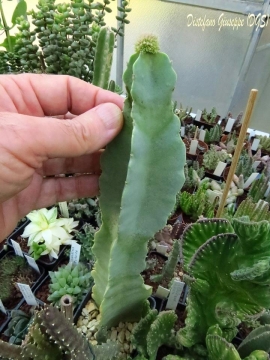 Caralluma retrospiciens var. acutangula (Caralluma acutangula) Photo by: Giuseppe Distefano
Caralluma retrospiciens var. acutangula (Caralluma acutangula) Photo by: Giuseppe DistefanoCultivation and Propagation: Caralluma acutangulaSN|17513]]SN|17513]] is relatively easy to grow. It needs regular watering, especially during the hottest summer days; provide also some light watering if the green house temperatures in winter are elevated. Either excessive or very scarce watering can induce rot.
Frost Tolerance: Winter temperatures must be kept over 10° C. But it can withstand winter night-time temperatures down to about 5°(or less) Celsius for short period. Freezing temperatures are fatal.
Sun Exposure: Full sun to half sun. It has a great advantage if grown in very strong light, but sheltered from full sun.
Cultural Practices: Provide very good ventilation. It grows quite easily and fast on its own roots. It is not difficult as commonly supposed.
Traditional uses: Caralluma acutangulaSN|17513]]SN|17513]] is used medicinally on Mali and northern Kenya the latex is applied to wounds and boils. It is used in magic to protect against theft of cattle. The plant is highly toxic and not grazed by cattle. it is used to kill dogs.
Propagation: Seeds and cuttings.
Your Photos

by Valentino Vallicelli



















